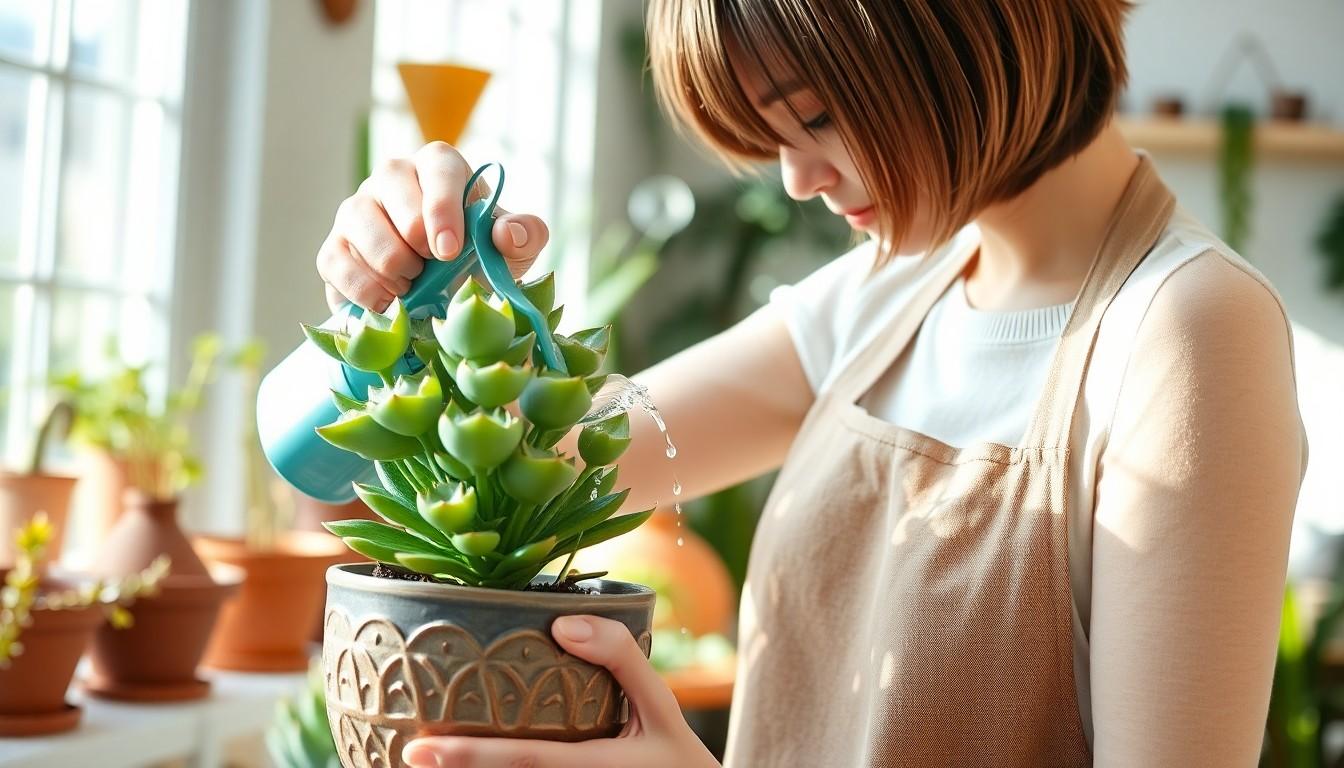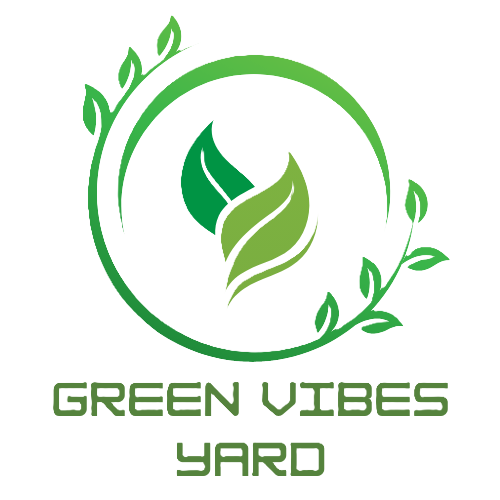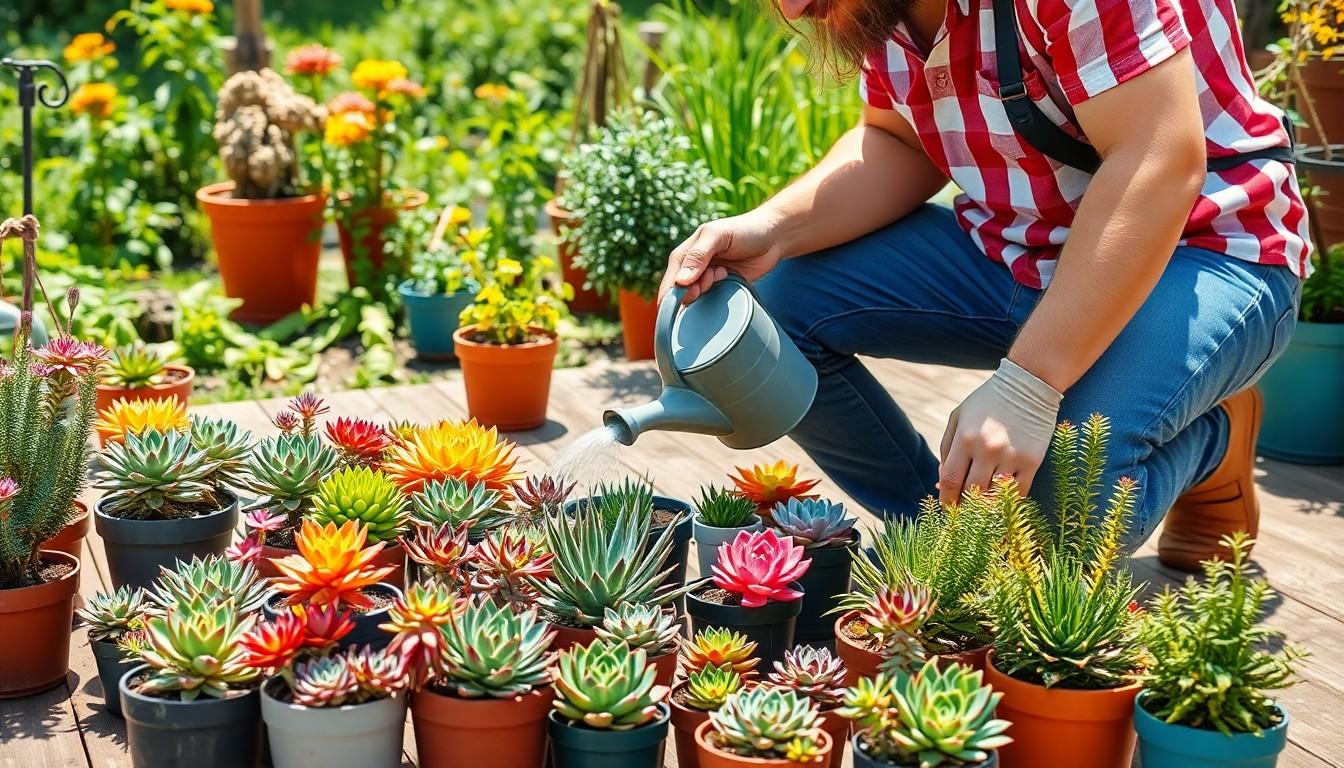Succulents are the trendy little green buddies that can brighten up any space without demanding too much attention. They’re like the introverts of the plant world—low maintenance yet full of personality. But here’s the catch: even these hardy plants need a little TLC when it comes to hydration. Watering succulents might seem as easy as pouring a glass of water, but there’s an art to it that can make or break your botanical friendship.
Understanding Succulents
Succulents are unique plants known for their thick, fleshy leaves that store water. These adaptations make them well-suited for arid environments.
What Are Succulents?
Succulents come from various plant families, including Cactaceae and Crassulaceae. They thrive in dry, sunny conditions, showcasing a range of colors, shapes, and sizes. Many types, like jade plants and aloe vera, have gained popularity in homes and offices due to their aesthetic appeal. Remarkably, these plants manage to survive with minimal water, making them ideal for busy individuals.
Why Correct Watering Is Crucial
Correct watering plays a vital role in the health of succulents. Overwatering leads to root rot, a common issue that can quickly destroy these resilient plants. On the other hand, underwatering can cause leaves to shrivel and die. Understanding the specific water requirements for each succulent type contributes to their longevity. Generally, a well-draining soil mix helps prevent excess moisture retention, ensuring they receive just the right amount of hydration.
Watering Techniques for Succulents

Effective watering techniques ensure succulents receive proper hydration without the risk of overwatering. Understanding these methods is crucial for their health.
Deep Watering Method
Deep watering saturates the entire root zone. This technique promotes deeper root growth, which helps succulents absorb more moisture when it’s available. Water until it drains out of the pot’s bottom, ensuring the roots receive ample hydration. Timing matters; the deep watering method works best during the growing season, typically in spring and summer. Checking the soil moisture before watering helps determine when a succulent requires water. If the top inch of soil feels dry, it’s time to water deeply.
Soaking Method
The soaking method involves placing the succulent pot in a basin of water. This technique allows soil to absorb moisture thoroughly from the bottom up, promoting even hydration. Submerge the pot for 10 to 15 minutes, ensuring the water reaches the roots. After soaking, remove the pot and let any excess water drain out. Implementing this method less frequently, every few weeks, can prevent overwatering issues. Regular observation of soil conditions ensures the succulent remains healthy and hydrated.
Environmental Factors to Consider
Understanding environmental factors is essential for watering succulents effectively. Proper light, temperature, and humidity levels significantly impact their hydration needs.
Light Conditions
Light conditions determine a succulent’s water uptake. Succulents generally require bright, indirect sunlight. Excessive direct sunlight can lead to sunburn, causing leaves to turn brown. An optimal light setup encourages robust growth and strengthens the ability to retain moisture. Enthusiasts often place succulents near east-facing windows for ideal lighting. Adjusting the placement according to seasonal changes ensures consistent light exposure.
Temperature and Humidity
Temperature affects the rate at which succulents absorb water. Most thrive in temperatures between 65°F and 80°F. Cooler temperatures inhibit growth, while consistently high temperatures lead to increased water evaporation. Humidity plays a critical role as well; low humidity encourages faster drying of the soil. Conversely, higher humidity levels can cause root rot if the soil stays damp for too long. Monitoring home conditions helps maintain a balance for healthy succulents.
Common Mistakes in Watering Succulents
Watering succulents involves careful consideration, as common mistakes can significantly impact their health. Recognizing these pitfalls can improve care practices.
Overwatering Issues
Overwatering presents a significant risk for succulents. It often leads to root rot, a condition where roots decay from excess moisture. Signs include mushy leaves and a yellowing appearance. Choosing pots with drainage holes minimizes this problem by allowing excess water to escape. Checking the soil moisture level before watering serves as a safeguard against overwatering. Aim for soil that dries out completely between watering sessions. Adjusting the watering frequency according to seasonal changes also helps prevent overwatering. In cool, humid months, succulents require less water than in warm, dry conditions.
Underwatering Challenges
Underwatering poses its own challenges for succulent care. Leaves may shrivel and lose their firmness when plants lack moisture. Signs of underwatering include droopy leaves and a dull color. A deep initial watering can help rehydrate succulents effectively. Regularly checking soil moisture ensures plants receive adequate hydration. Consider using a moisture meter for precision. Factors such as temperature and humidity can accelerate soil drying, requiring more frequent watering. Observing the plant’s growth can provide valuable insights into its hydration needs. Adjusting care routines based on changing environmental conditions fosters healthier succulents.
Signs of Healthy vs. Unhealthy Succulents
Healthy succulents display vibrant colors and plump leaves, indicating proper hydration. Growing upward, they maintain firm structures without drooping. Leaves typically appear smooth with no signs of browning. Root systems thrive in well-draining soil, helping to avoid excess moisture.
Indicators of Proper Watering
Sufficient hydration results in leaves that feel thick and fleshy. Roots absorb water effectively when soil is allowed to dry out completely between watering sessions. Well-watered succulents often produce new growth, signaling vitality. Observing bright, green leaves demonstrates adequate moisture levels.
Symptoms of Water Stress
Shriveled leaves highlight a lack of water, indicating underwatering. When succulents develop mushy or brown spots, overwatering may be the culprit. Drooping stems often suggest inadequate hydration or a potential root problem. Yellow leaves serve as signs of stress from excessive moisture retention. Regular monitoring of these symptoms ensures more resilient succulents.
Conclusion
Mastering the art of watering succulents is key to their thriving health and beauty. By understanding their unique hydration needs and environmental factors, one can cultivate a vibrant collection of these resilient plants.
Regular observation and adjustments based on season and conditions ensure succulents receive just the right amount of water. With the right techniques and care, anyone can enjoy the stunning diversity and low-maintenance charm that succulents bring to their spaces. Embracing these practices will lead to flourishing plants that enhance any environment.

